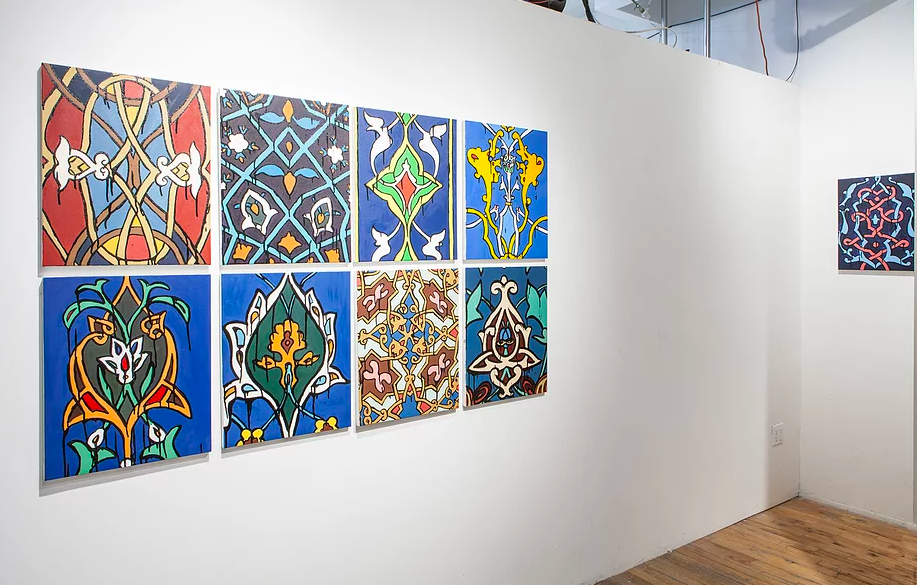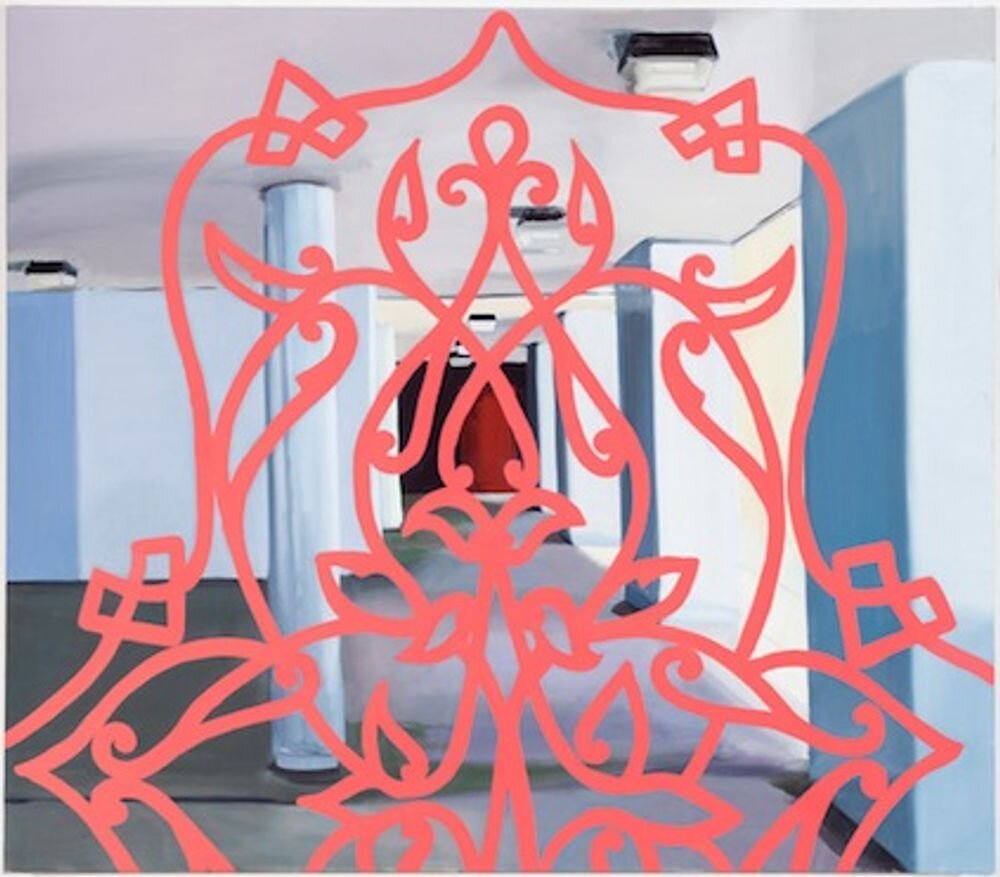Arabesques
Noa Charuvi
Curated by Naomi Lev
May 3, 2014 - May 17, 2014
The Shirey
New paintings decorate the walls of “The Shirey” in Bushwick. Here, Noa Charuvi presents her debut solo exhibition in New York inspired by Islamic ornaments which convey Charuvi’s practice and experiences in oil on canvas. Bright colors of exotic geometric forms illustrate the canvases and create a wall installation that brings forth the mysticism of the Middle East. Charuvi’s new series of works is based on tiles from mausoleums in Samarkand, Uzbekistan, where they decorate the outsides of religious structures. The mausoleum, considered as a type of tomb, strongly relates to the artist’s previous series of works where she created paintings of demolished buildings in Palestine and from the occupied territories. The original photographs derived from news-stills and image-banks associated with the conflicted region. The artist’s paintings of the ruined structures, presented in bright oils, create a sense of liquidity and 3D-effect, as if the scene is moving and transforming.
As she resided in Israel for most of her childhood and adult life, Charuvi constantly reflects on the complex situation in the area and the choices we make as nations and as individuals, with this of course her own moral obligations. Dealing with images from news and documents where there is an attempt to create an objective standpoint, Charuvi shares her subjective stance by creating personal and empathetic brushstrokes and a deliberate emphasis on a seductive color scheme. The ambivalence in the perspective of the Israeli is interesting here: on the one hand by living in Israel she is a part of this reality, and on the other hand she is foreign to it as she does not experience the destruction first hand as the Palestinians do (and whose homes she paints).
The Islamic tile ornaments reproduced in this exhibition are familiar to Charuvi from childhood – growing up in Jerusalem these decorative elements were part of her home. The patterns which are an integral part of the Islamic culture are currently weaved into the Israeli experience; not only because of the many Muslims living in Jerusalem and across Israel, but also because of the many Arab-Jews who migrated to Israel since its establishment and brought local decorative traditions along. What used to be, for example mausoleum decorations, now decorates the interiors of many Jewish and Israeli interiors.
From the outset these geometric forms symbolize transformation. The designs, being free of any figurative meaning convey beauty which by repetition, offers transcendence. Symmetry, proportion, and spacing reflect the ideal notions of balance in the Qu’ran as in nature: “The sun and the moon to a reckoning, and the stars and the trees bow themselves; and Heaven – He raised it up and set the balance” (Qur’an 55:5).
Drawing these ancient forms on the façade of contemporary architecture is a new phase. Where do the two converge? This enigma is part of the adaptation process which brings together places, traditions, and cultures that can encompass the complexity of time.
Noa Charuvi, Arabesques, 2014, The Shirey (Installation view)
Noa Charuvi, Arabesques, 2014, The Shirey (Installation view)
Noa Charuvi, Arabesques, 2014, The Shirey
Noa Charuvi, Arabesques, 2014, The Shirey
Noa Charuvi, Arabesques, 2014, The Shirey




